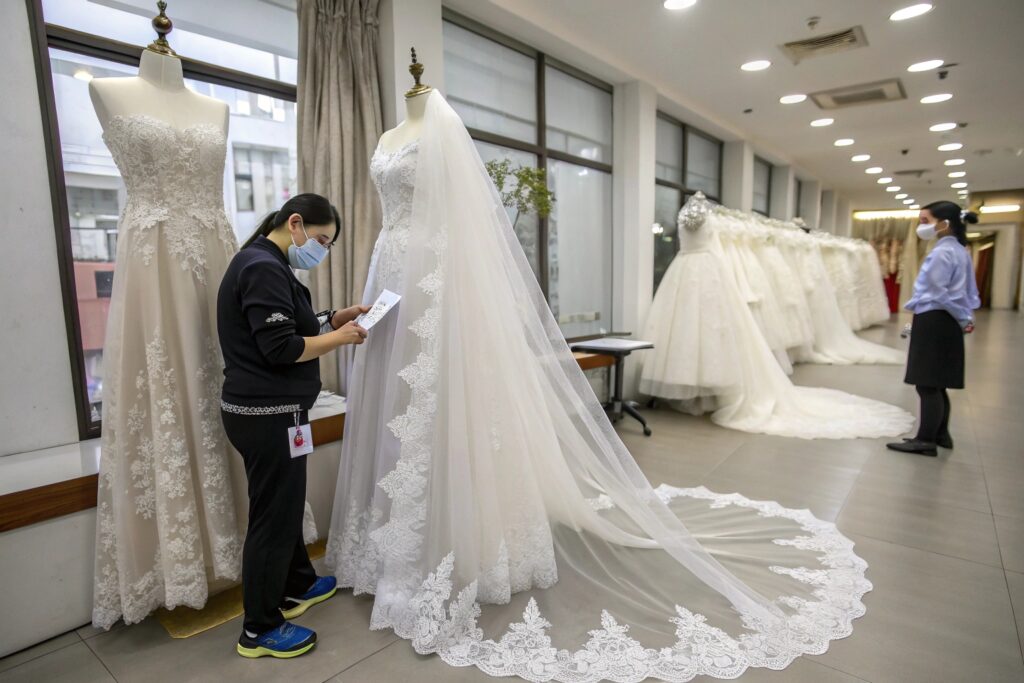You found the perfect bridal lace veil—delicate scalloped edges, crystal embroidery, and a timeless finish. But when sourcing in bulk for your wedding accessories line, the challenge becomes quality, consistency, and trust. One wrong batch and your whole brand reputation could be on the line.
To source lace veils in bulk, choose manufacturers with a proven record in bridal accessory production, in-house quality control, and fabric sourcing expertise. The best suppliers handle sampling, embroidery, packaging, and customs under one roof.
At HairAcc, we’ve worked with international brands and wedding retailers across Europe and the US. Our factory offers full-service lace veil production—from design mockups to safe DDP shipping.
Where do wedding veils come from?
Veils carry centuries of tradition, but modern buyers need more than just heritage—they need trusted sourcing.
Today’s bridal veils are produced in specialized factories, mainly in Asia (China, Vietnam, India), where lace, tulle, and embellishments are crafted at scale for global markets.
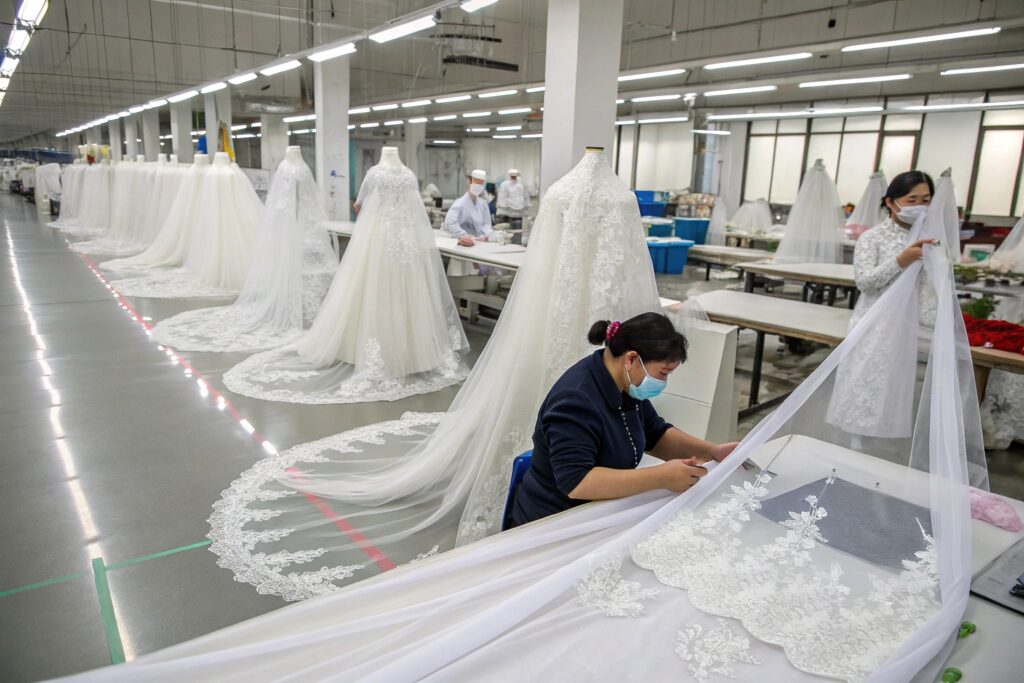
Why do most veils come from Asian factories?
The answer is a mix of heritage, labor expertise, and production volume:
- China has long dominated bridal and accessories manufacturing. Its factories source embroidered lace, crystals, and trims from domestic textile hubs.
- India is famous for hand embroidery and zari (metallic thread), which adds value to custom veils.
- Vietnam and Bangladesh serve as production hubs for cost-sensitive markets, offering machine-embroidered veils at scale.
| Country | Strengths | MOQ | Typical Lead Time |
|---|---|---|---|
| China | Lace sourcing, high-volume production | 100–300 pcs | 2–4 weeks |
| India | Hand-embroidery, artisan lace | 50–100 pcs | 3–5 weeks |
| Vietnam | Basic tulle veil mass production | 500+ pcs | 4–6 weeks |
At HairAcc, we source lace from Suzhou and Guangdong, known for bridal textiles. Our QC team inspects every batch of embroidery before stitching begins.
Why are some veils so expensive?
You’ve probably seen veils priced from $20 all the way to $300. But what makes one veil cost more than another?
The price of a lace veil depends on the type of lace, amount of embroidery, handwork involved, and the brand markup. The more manual the process, the more expensive the veil.
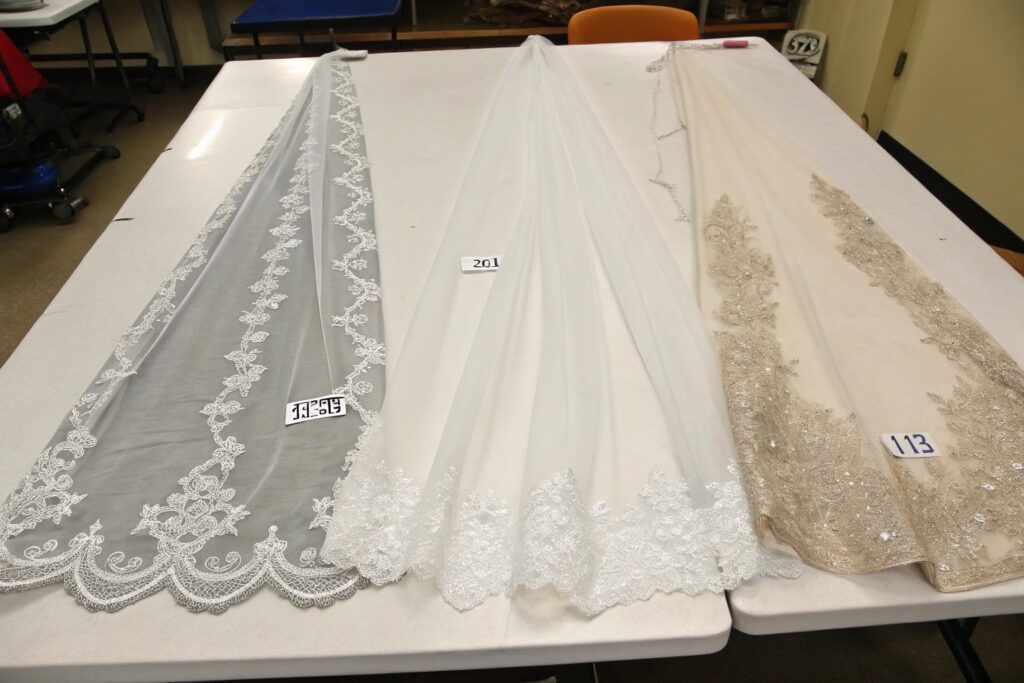
What drives the cost of lace veils in bulk?
Even at wholesale, these factors change pricing:
-
- Chantilly lace or French lace = High cost
- Machine-made net lace = Low cost
-
- Hand-sewn beads, rhinestones, crystals
- Heat-press or glue-based attachments
-
- Raw edge = Cheaper
- Scalloped or lace-trimmed = Adds labor cost
-
Length & Layers
- Cathedral veils = More material
- 2-layer veils = More cutting and sewing
| Veil Type | Material Cost | Labor Cost | Price Range |
|---|---|---|---|
| Single-layer tulle veil | Low | Low | $2–5/pc |
| Scallop lace veil | Medium | Medium | $6–10/pc |
| Beaded lace cathedral veil | High | High | $12–20/pc |
If your brand targets bridal shops or Etsy-style retailers, quality consistency matters. A trusted manufacturer like HairAcc will offer clear quotes based on lace grade, labor hours, and your packaging needs.
How long does it take to make a lace veil?
If your supplier says they can deliver 1,000 pieces in 5 days—run. That’s either stock from a warehouse or a quality disaster waiting to happen.
For custom or semi-custom lace veils, production typically takes 2–4 weeks, depending on complexity, lace sourcing, and QC requirements.
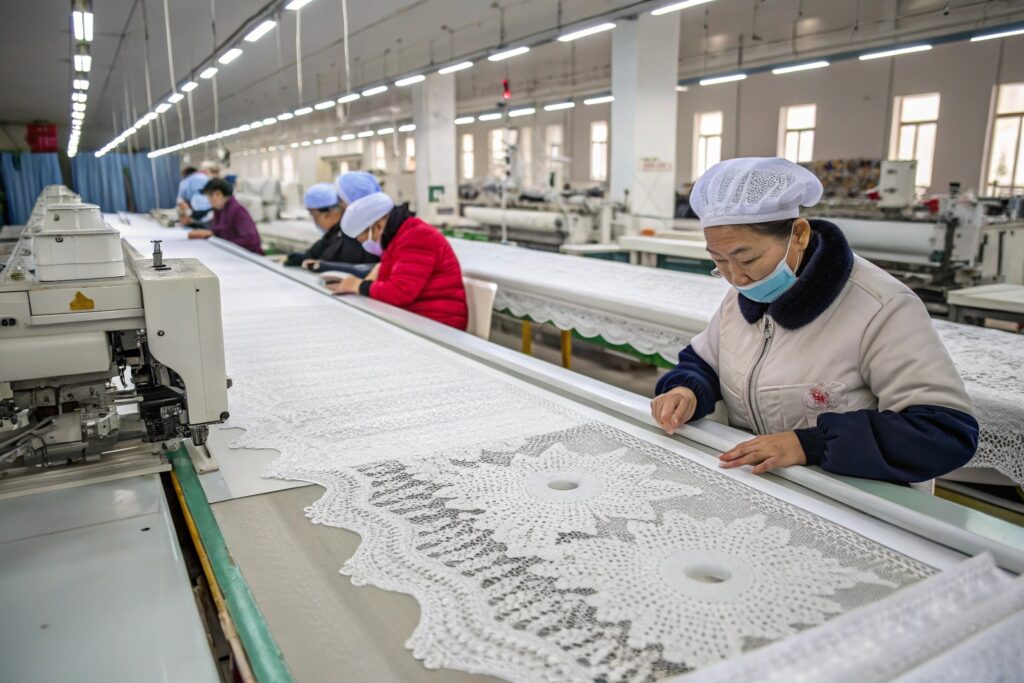
What steps are involved in lace veil production?
Bulk veil production isn’t just about sewing. It involves multiple stages:
-
- Based on design: scalloped edge, floral motifs, geometric patterns
-
- Overlock, scallop trimming, pearl hand-stitch
-
- Crystal application, embroidery alignment, glue test (if used)
-
Veil Mounting
- Attaching to comb, ribbon tie, or elastic band
-
Steam Pressing & Packing
- Veils are ironed gently to keep tulle smooth
| Production Stage | Duration (approx.) |
|---|---|
| Lace Sourcing | 3–5 days |
| Cutting & Sewing | 5–7 days |
| Embellishment | 3–5 days |
| Pressing & QC | 2 days |
At HairAcc, we always test steam-resistance and folding durability. Our packaging is export-safe, even for delicate lace with beads.
What is the best material for a veil?
When a customer runs their fingers across a veil, they notice more than looks—they feel texture, weight, and softness.
Tulle (especially nylon or polyester-based) is the most commonly used material for veils. Lace, satin trims, and organza are used as decorative elements.
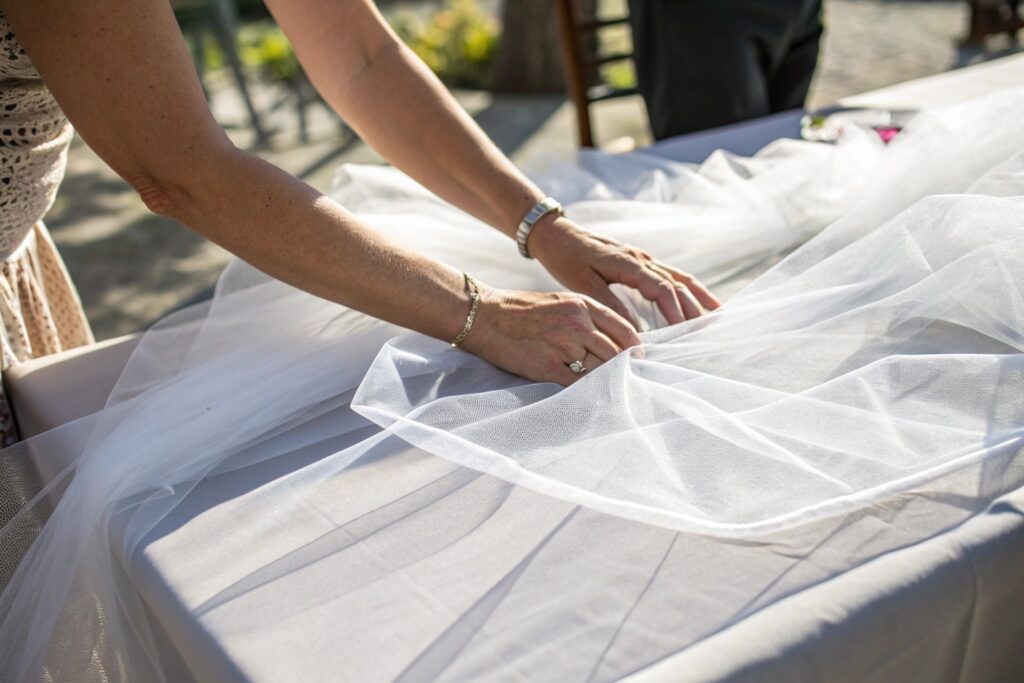
How do veil materials affect price and feel?
Here’s a breakdown of materials used:
| Material | Feel | Transparency | Cost | Best For |
|---|---|---|---|---|
| Soft Tulle | Smooth, light | High | Low | Cathedral/Chapel Veils |
| Stiff Tulle | Structured | Medium | Low | Short/Retro Veils |
| Organza | Crisp, shiny | Medium | Medium | Statement Pieces |
| Lace Trim | Textured, vintage | Low | Medium–High | Boho & Luxury Styles |
Buyers often ask: Will the tulle wrinkle?
We only use wrinkle-resistant tulle and test compression packaging.
At HairAcc, we provide free fabric swatches upon request. Our QC team checks not only color accuracy but also fabric GSM, which affects fall and softness.
Conclusion
Sourcing lace veils in bulk doesn’t need to be complicated or risky. When you choose a manufacturer like HairAcc with verified QC systems, embroidery expertise, and bridal production experience, you save time, protect your brand, and ensure beauty in every veil delivered.

